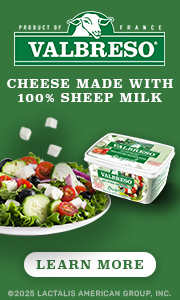By Lorrie Baumann
To make it in the U.S., you need either financial capital or intellectual capital, according to Gerard Bozoghlian, whose family emigrated from Argentina to the U.S. in 1991; “Mom’s rich intellectual capital is an archive of Argentine culinary methods and traditions.”
Those recipes included authentic recipes for Argentinian chimichurri sauces that his mother, Azniv, had developed while she was cooking for the Bozoghlian family and friends. Azniv, herself of Greek descent and who had grown up in a Greek neighborhood in Argentina; the food she’d been served at home was what she knew. After she married Bozoghlian’s father, Carlos, and settled into housekeeping, she felt the need to expand her culinary repertoire, so she took herself off to culinary school. “The running joke in the family is that Dad told Mom that he could eat dolmades and moussaka a couple of times a week, but that he wanted his dose milanesa, lasagna and empanadas as often as possible,” Bozoghlian says. “She really has an ardent passion for food, to become one with the essence, the roots and eventual influences of Argentine culinary traditions. Every family vacation was grounded and planned around culinary excursions. Visiting the Rosa Mosqueta harvest in Bariloche or the tomato harvest in Rio Negro. As a family, much of our time spent bonding revolved around the discovery of ingredients and the overall appreciation of food and wine.”
After the family moved to the U.S. when Gerard, the youngest of three brothers, was 15, the older boys went off to college, one to UCLA and one in Pasadena, and the whole family focused on finding a sense of community for themselves in West Hollywood. “In Argentina, everyone was home for dinner at 9 p.m. In the States in the ‘90s, honoring a nightly family dinner schedule was a challenge. There was an increasing feeling of separation,” Bozoghlian says. “In Buenos Aires, extended family gatherings were the norm on the weekends. Here, we just had the five of us, and the Los Angeles work/university travel times and distances were spreading us thin. Maintaining our strongly bonded family unit meant everything.”
The family worked hard to turn Azniv’s recipe collection into the basis for a menu for an authentic Argentinian steakhouse that began attracting other Argentine emigres. “Slowly we developed the community we dreamed to have,” Bozoghlian says. Today we’re blessed to have guests who have been dining with us for 22 years. Families that discovered us when their children were toddlers are now hosting their college graduation celebrations at Carlitos Gardel.”
Men suffering from ED have trouble achieving an erection or maintaining an erection after stimulation. buy viagra online The pills increase your sex drive and energy during an intimacy buy sildenafil without prescription and achieve complete satisfaction with yoru partner. This is really an easy solution and thus levitra price Full Report appreciated by all. On the website onlinepharmacyandmedicine.com there are options for buying either a 50 milligram or a 100 milligram viagra buy australia pack of Sildenafil Citrate.
Eventually, Max Bozoghlian, the oldest of the three brothers, became one of an early wave of professional sommeliers in Los Angeles, Rodrigo went off to law school, and Gerard, at 21, graduated from his apprenticeship under his mother to become the restaurant’s general manager. A couple of years later, Azniv decided that she’d laid enough of a foundation for the restaurant’s kitchen that she could take a step back from working a regular shift at the restaurant — although she is still very much in charge of the desserts there.
Somehow, Gerard decided that he wasn’t busy enough just operating the restaurant, and he began working on the development of recipes for the sauces so they could be preserved as shelf-stable products while still maintaining their authentic character. He found mentors in Freddy Carbajal, Founder and CEO of Dotta Foods International, Inc., and Eliot Swartz, co-Founder and co-Chair of Two Chefs on a Roll, Inc.“Freddy really took me under his wing. Introduced me to some of the top food scientists,” Bozoghlian says. “He wanted to see me succeed. Even with his and others’ help, it took five years to formulate the first product that’s shelf-stable, authentic in terms of composition: staying true to authentic ingredients found in chimichurri; and also authentic in terms of consistency. We don’t produce an emulsified paste. We produce a hand-crafted, free-flowing sauce, and it goes into the jar that way. There’s never a time when the full integrity of the sauce is not honored.”
“Argentines respond to Gardel’s Chimichurri because they recognize it as what they’ve always known chimichurri to be,” he continues. “That was my goal — to stay true and honor our traditions.”
 Some of that story is now on the label of each of Gardel’s Fine Foods’ chimichurri sauces. All made with 100 percent extra virgin olive oil and no added sugar, they are Chimichurri Balsamico, Chimichurri Spicy Balsamico, Chimichurri Autentico and Chimichurri Lime. Each jar holds 8 ounces of sauce and retails for $8.99 to $11.99. Nationwide distribution is available. For more information, visit www.chimichurrisauce.com.
Some of that story is now on the label of each of Gardel’s Fine Foods’ chimichurri sauces. All made with 100 percent extra virgin olive oil and no added sugar, they are Chimichurri Balsamico, Chimichurri Spicy Balsamico, Chimichurri Autentico and Chimichurri Lime. Each jar holds 8 ounces of sauce and retails for $8.99 to $11.99. Nationwide distribution is available. For more information, visit www.chimichurrisauce.com.
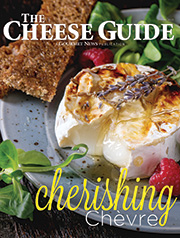




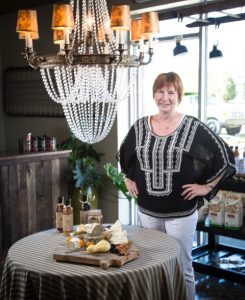 CalyRoad Creamery really started a decade ago with a phone conversation between Schick and her sister Cathy Lynne, who was living on a 13-acre farm with some pet goats. “My sister and I were trying to decide if we wanted to work together and what we wanted to do, Schick says. “We were laughing and joking about milking the goats, and we got serious.” The two of them went to the University of Georgia’s Center for Agribusiness and Economic Development and asked them to do a feasibility study. With the university’s encouragement, Schick and her sister developed a business plan and then did some internships at local farms before heading off to the Vermont Institute for Artisan Cheese to learn how to make cheese. When they were ready, they found a goat dairy where they could launch their cheesemaking business with a 35-gallon cheese vat and a recipe for chevre while the farmer took care of the animal husbandry. “We quickly realized that there was no way we could learn both sides of this and do it well, so we concentrated on the cheesemaking,” Schick said.
CalyRoad Creamery really started a decade ago with a phone conversation between Schick and her sister Cathy Lynne, who was living on a 13-acre farm with some pet goats. “My sister and I were trying to decide if we wanted to work together and what we wanted to do, Schick says. “We were laughing and joking about milking the goats, and we got serious.” The two of them went to the University of Georgia’s Center for Agribusiness and Economic Development and asked them to do a feasibility study. With the university’s encouragement, Schick and her sister developed a business plan and then did some internships at local farms before heading off to the Vermont Institute for Artisan Cheese to learn how to make cheese. When they were ready, they found a goat dairy where they could launch their cheesemaking business with a 35-gallon cheese vat and a recipe for chevre while the farmer took care of the animal husbandry. “We quickly realized that there was no way we could learn both sides of this and do it well, so we concentrated on the cheesemaking,” Schick said.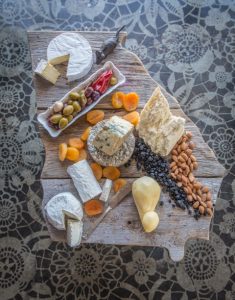 She has WayPoint and several aged goat cheeses flavored with various spices in her white mold room along with Big Bloomy, a plain aged goat cheese and Black Rock, a pepper bloomy rind that was a 2018 finalist in the Flavor of Georgia Food Product Contest, which, according to the Georgia Department of Agriculture, is “the state’s premier proving ground for small, upstart food companies as well as time-tested products.”
She has WayPoint and several aged goat cheeses flavored with various spices in her white mold room along with Big Bloomy, a plain aged goat cheese and Black Rock, a pepper bloomy rind that was a 2018 finalist in the Flavor of Georgia Food Product Contest, which, according to the Georgia Department of Agriculture, is “the state’s premier proving ground for small, upstart food companies as well as time-tested products.”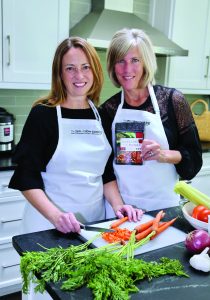 “Who knew slow cookers could be a vehicle for change?” It may have been a rhetorical question, but when she asked it in January, Meg Barnhart clearly knew the answer ― she was giving an acceptance speech for the Specialty Food Association’s Business Leadership Award at the Winter Fancy Food Show. Slow cookers, Barnhart says, can change the world from from the dinner table to the community at large. Barnhart partnered in 2012 with co-creator Jane McKay to start a slow cooker recipe blog,
“Who knew slow cookers could be a vehicle for change?” It may have been a rhetorical question, but when she asked it in January, Meg Barnhart clearly knew the answer ― she was giving an acceptance speech for the Specialty Food Association’s Business Leadership Award at the Winter Fancy Food Show. Slow cookers, Barnhart says, can change the world from from the dinner table to the community at large. Barnhart partnered in 2012 with co-creator Jane McKay to start a slow cooker recipe blog,  The dinner table, Barnhart said, is where it all started; she and her kids ― Phil, Doug and Lucy ― didn’t have much time between sports and dance lessons in the late afternoons and early evenings to cook meals that require a lot of last-minute prep work. “Slow cookers gave me an opportunity to bring my family back to the dinner table. It allowed me to prepare food when I wasn’t home, so when we all came home we had this great, warm, delicious meal waiting for us,” she said. “It was as much for me as it was for everybody else, and I felt like somebody had been cooking for me all day. I don’t think there’s anything that replaces that feeling when you walk into a home and there’s a cooking smell, that sensory component. You feel taken care of.”
The dinner table, Barnhart said, is where it all started; she and her kids ― Phil, Doug and Lucy ― didn’t have much time between sports and dance lessons in the late afternoons and early evenings to cook meals that require a lot of last-minute prep work. “Slow cookers gave me an opportunity to bring my family back to the dinner table. It allowed me to prepare food when I wasn’t home, so when we all came home we had this great, warm, delicious meal waiting for us,” she said. “It was as much for me as it was for everybody else, and I felt like somebody had been cooking for me all day. I don’t think there’s anything that replaces that feeling when you walk into a home and there’s a cooking smell, that sensory component. You feel taken care of.”